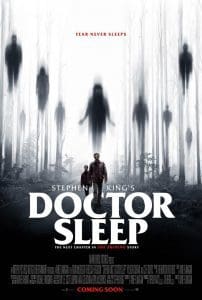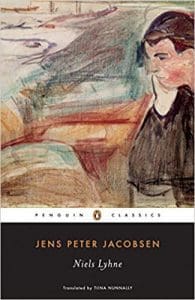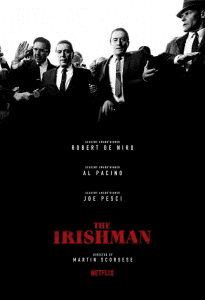Lindsey Pannor, Intern: I can already envision my trip home this Thanksgiving: filing into a huge jet plane, (hopefully) sleeping through the red eye, waking up hovering right over home, and watching the deep orange of the sunrise scatter the thick winter night. I’ll have my headphones on, listening to Lætitia Tamako’s self-titled album by her moniker “Vagabon.”
Since its release late last month, I have amassed an array of reasons to adore Vagabon. Most strikingly, Tamako’s sound traverses genre constantly. The album lies somewhere in between the oozing dream pop of Beach House and the lo-fi buzz of Miya Folick; and despite never settling into one sensibility for too long, I am still able to take comfort in familiar, brief, distinctive moments of indie rock and R&B aesthetics throughout. Tamako distinguishes this album’s style from her last by favoring analog beats over her old guitar melodies, diving into personally uncharted territory.
These new beats combined with her distinctive voice gives rise to a magical transformation, from what used to be an alternative sound typical to countless artists to one uniquely her own. Tamako integrates her crooning vocals alongside gentle blips of synth and slow bass riffs simultaneously and seamlessly. The solemn beginnings of many of the songs, set in a slow 4/4 signature like the heavy cold nighttime air, easily lift into rising upbeats of horn and yearning. They tangle into one another, calling on the liminality of morning’s waking.
Her lyricism mirrors this consistent movement throughout, making apparent both the uniqueness of her prose style and its incredibly specific universality, the kind that seizes up my heart. Particularly timely to the season, songs like “Please Don’t Leave the Table” tap into that familiar pang of betrayal when left to eat alone, as she begins the song with a wavering profession of love, and begs for the addressee not to leave, because, well, she’s still eating. “Home Soon” follows on the album, dragging one simple refrain over soft violin and reverb: “I give it all away / I’ll be home soon.” Pleasant and grounding, this song is among my favorites as it pulls away from the theme of a lover and dedicates space to reconnecting with our origins.
As we return to our nests and are met by the people who know us best this month, we will inevitably be wrapped in the existential fog of the holidays. Reflection and gratitude are integral to the spirit of the upcoming weeks, and instead of settling stagnant into the confusion this brings, I’ll be looking to Vagabon for guidance. As a woman writing and producing all of her own music as well as exploring her sense of self in relation to the love she has for others, Tamako’s new album has given me a forgiving, inspiring roadmap to explorations of my foundations.
RECIPE: Speaking of inspiration, I’ll also be trying my hand at baking Melissa Clark’s recipe for Brandied Pumpkin Pie while I’m back home. There’s truly nothing like a good pumpkin pie in my family, and perhaps I’ll garner some extra affection with such a well-reviewed and unusual variation on the classic. I’m eagerly awaiting a trip to the Fox Theatre upon my return, where, on December 7th, Vagabond will be opening for Angel Olsen. Feel free to join me.
Laura Cogan, Editor: I’m sorry, but all I can really think about at the moment is food. Every year around this time it’s as though my interest in cooking comes lumbering out of a deep hibernation, lured from slumber by the chill in the air and the scent of gingerbread. Still, even at peak interest, I am not a skilled or patient cook, so any recipe that makes it into my folder of favorites can’t be fussy or “fiddly” (as they say on the Great British Baking Show, where most assignments are, in fact, quite fiddly). Here are a couple that I especially enjoy, both preparing and eating.
Years ago, when I proposed shifting to a vegetarian or at least a “pescetarian” Thanksgiving meal, my family was generously accommodating. It was much easier than I expected to get everyone to abandon the turkey, which, while labor intensive, turned out not to be anyone’s favorite part of the meal. My mother’s only condition was that there must be stuffing, and I promised there would be. As it turns out, making stuffing in a dish rather than inside a raw turkey is an immeasurably more enjoyable experience. A win for everyone, especially the turkey (and germaphobes).
This recipe (while not as clearly written as it might be) turns out a reliably delicious stuffing, and conveniently offers one method with many variations; I recommend the apple and cranberry. Doubling the recipe for a large group works well, although it requires a good deal of space.
The other indispensable part of the Thanksgiving meal or seasonal baking, in my view, is pie. I’ve tried several but here is the most popular, most frequently requested pecan pie recipe I’ve made so far.
Note the generous 3 tbsp of bourbon (vs. the mere 2 tbsp suggested by many other recipes). Yes, you will taste the bourbon. If a bourbon cocktail could wrap itself in a cozy coat of chocolate and pecans and masquerade as a tipsy desert, it would be this pie.
This year I’ll be (clumsily) making it with a homemade crust, but trust me when I tell you that using a deep dish frozen pie crust is just as good, and makes it the actual simplest pie I’ve ever made. If you do use a prepared crust I highly recommend adding this step: brush the rim of the crust with an egg wash and then sprinkle with turbinado sugar. This makes it look gorgeous, and if someone happens to assume you did in fact make it from scratch I don’t see any reason to interject and correct them. Let’s not make the holidays any more difficult than necessary.
Zack Ravas, Editorial Assistant: There was a time when proposing a sequel to an iconic film like The Shining would have been met with outrage by the culture at large (I still remember the media pillorying Gus Van Sant received for his ’98 remake of Pyshco); but based on the dismal theatrical turnout for this year’s Doctor Sleep, it seems the general audience reaction in 2019 is indifference. Which is a shame for a number of reasons, but one of those is that—as daunting as it seems to follow up Stanley Kubrick’s seminal 1980 horror film—Doctor Sleep is really quite good.
The movie represents the finest theatrical effort yet from Mike Flanagan, a filmmaker who has built a steady resume of humanist horror films that favor character and emotion over graphic violence or hollow jump scares. Movies like Oculus and Ouija: Origin of Evil display Flanagan’s interest in familial legacy and the inheritance of trauma, culminating with last year’s exquisite Netflix mini-series The Haunting of Hill House. His ability to balance supernatural elements with character drama, not to mention his keen visual sense, made him a natural fit to adapt Stephen King’s 2013 novel Doctor Sleep.
And therein lies the challenge: how to reconcile King’s source text with The Shining’s cinematic legacy, given that King himself has long been the loudest critic of Kubrick’s adaptation. In the novel, one senses that Jack Torrance is a fundamentally good man, despite fighting a losing battle with his inner demons; onscreen, we suspect Jack Nicholson would have eventually gone axe-swinging mad even if he had never checked into the Overlook Hotel. It’s a discrepancy that has clearly always irked King, who saw his own struggles with alcoholism reflected in the character. Flanagan’s film, then, must ultimately serve two masters, but the director does so artfully, paying homage to Kubrick’s enduring visual iconography while penning a depiction of the Torrance family that is perhaps more in line with King’s vision.
To be honest, I found the experience of watching Doctor Sleep in the theater to be strangely moving. The Shining has long been one of my favorite films and, in many ways, feels like more than just a movie to me; it’s a work of art with an atmosphere so palpable that, for 146 minutes, the skeptic in me shuts off and I believe whole-heartedly in the supernatural. A viewing earlier this year felt even more magnified than before—as the Overlook Hotel is a place where evil congregates and thrives and, looking around us these last few years, that seems to be increasingly true of the world outside the movie theater as well. It makes me want to cling to what good exists in The Shining universe: the resourceful Danny Torrance and his psychic protector Tony; Shelley Duvall’s wide-eyed matriarch; the genuine warmth Scatman Crothers brought to his role. Duvall, long derided by many for her turn in the film, gives my favorite performance in The Shining; and I suppose that’s partially what made Doctor Sleep so emotionally impactful: as I watched Flanagan’s sequel, I sensed that he cared about and appreciated those same aspects of Kubrick’s film, and not just the immediately quotable moments like “Here’s Johnny!” (Alex Essoe’s performance here as Wendy Torrance serves as a lovely tribute to Shelley Duvall)
In 2019 it’s easy to feel like ‘the Shine’ has gone out of the world. Evil does persist, as evidenced by Doctor Sleep’s most difficult-to-watch scene, in which the movie’s antagonists, a pack of RV-driving vampires known as the True Knot, torture and murder a young boy in an empty lot. But Flanagan is able to end his adaptation on a hopeful note: in Doctor Sleep, we see psychic trauma serve as a bond between one generation in the next, as a middle-aged Dan Torrance fights to protect a young girl named Abra, also blessed with supernatural abilities. And it’s ultimately Dan’s same demons, when properly harnessed, that allow him to fight back against the True Knot. It’s a reminder that so many victims of abuse do not go on to inflict that same abuse on others, but instead find the courage to become counselors or mentors to those in need.
RECIPE: Not unlike our Editor, I’m always looking for an excuse to remove turkey from the Thanksgiving equation—it’s dry, it makes you sleepy, and is really only there to accentuate the stuffing and gravy, if we’re being honest. A couple years ago, I tried this honey curried roasted chicken as an alternative and now I have no reason to ever go back. Sorry, turkey!
Gabe Weiss, Intern: Danish writer Jens Peter Jacobsen’s novel Niels Lyhne explores the same polarities between dogmas of religion and science that we still face today. Modernist poet Rainer Maria Rilke claimed the only books he found indispensable were the Bible and Jacobsen’s novel. In his letters, he praised Niels Lyhne: “In it there is nothing that does not seem to have been understood, held, lived and known in memory’s wavering echo.”
To me, it is not surprising that a sensitive poet like Rilke would suggest Niels Lyhne to young poets searching for a reason to write, as Jacobsen’s novel aims to distinguish the polarity between faith and reason. The book examines the internal struggle of a rational person with romantic ideals attempting to redefine his faith on his own terms. I suspect Rilke saw this struggle to be the same for all poets who try to shape their lives around art and tackle the burden that comes with this personal commitment.
Jacobsen himself was both a poet and a botanist, a translator of Charles Darwin, and an admirer of Kierkegaard. Through his studies, the author’s conflicting interests between science and poetry led him to believe that the illusion of the Christian faith was in conflict with the laws of nature. Much like his character Niels, Jacobsen lost his romantic partner due to these beliefs and later suffered from tuberculosis, which likely fueled the writing process of his masterwork.
Niels Lyhne is a coming of age story about a boy who feels contempt for the Christian faith that his family clings to like a crutch rather than overcome their grief and suffering through reason. Despite Niels’ indifference to organized religion, he realizes that his disapproval of God and his family’s blind devotion to Him is out of spite rather than genuine doubt. After the death of his aunt Edele, he decides to cast God out of his heart due to what he regards as a betrayal. As Niels matures, he engages in various love affairs with women who try to warn him about the consequences of idealized love. Throughout the novel, we find that many of the characters in the book seem doomed to feeling alone, from the tutor who was in love with Edele to Niels’ long affair with his friend Erik’s wife, who tries to teach him to accept what he can’t control: “We can’t hold out waging a battle against ordinary people; deep inside we think they are right because they are the ones who judge.” Jacobsen’s depicts Niels’ struggle to fill the emptiness of a godless existence and live vicariously through those very same individuals who oppose him.
While this novel is rooted in its atheistic beliefs, it also shows Niels’ gradual attainment of free will. At Edele’s funeral, Jacobsen delves into the mind of the angry pubescent who bitterly justifies his resentment of God:
“With a believing mind he had followed Jesus on his wandering of the earth. But the fact that Jesus was still subordinate to his Father, walked so powerlessly, and suffered so humanly, had concealed his Godliness from Niels; in him Niels had seen only the son of God, not God Himself, and thus it was to God the Father that he and prayed, and it was God the Father who had betrayed him in his bitter need. But if God had turning away from him, then he could also turn away from God. If God had no ears, then Niels would have no voice.”
Here Jacobsen makes the bold claim that the suffering of Christ is comparable to the same kind of betrayal that Niels felt when Edele passed away. To me, Niels Lyhne evokes the restlessness that comes when we feel dissatisfied with the beliefs that govern us in our own age. Jacobsen’s mature approach to these religious dilemmas remind us that we are living in the repercussions of historical change, and that we are still a part of an ongoing narrative, regardless of what we might think. Jacobsen’s confident approach to Athiesm as a way of life doesn’t entirely dismiss religion, for it reminds us that faith and reason are now in our own hands, and we must responsibly wield them to inspire the stories yet to be told for generations to come.
RECIPIE: Here is the recipe for the German Rotkohl my grandmother used to make for us each year.
Oscar Villalon, Managing Editor: There’s plenty that’s been said about Martin Scorsese’s masterpiece, but among the movie’s rich themes worth considering is how Scorsese, who is 76, depicts aging. It is pitiless. Decrepitude is in the fore. We see his characters reduced to wheelchairs and walkers, limbs trembling, words slurred. A walk down a dark hallway becomes a life-and-death challenge. But worse, much worse, is what it would mean to be the near the end of life without love. Your friends are all dead. Your family wishes you were dead. And yet you carry on, alone in a nursing home, just regret and perplexity to keep you company.
I would suggest that it’s one thing to depict from your director’s chair, while cozy within the warm assurance of your youth, the inevitable (assuming you’re fortunate to make it that long). But it is entirely different to do so when you are in the anteroom leading to the Big Nothing. Perhaps that is why aging doesn’t come off as a simple trope here. Rather, it feels like gospel truth. It raises the question of what are you doing with your life: are you taking care of what’s important? Will you be able to stand yourself? Can you make your peace?
Spalding Gray said everybody knows they’re going to die, but nobody believes it. The Irishman can be understood as an old man’s soliloquy wherein he no longer has the luxury of not believing. Even as he still can’t quite bring himself around to that understanding—out of fear, perhaps, of accepting how badly he misspent his life, or simply because he doesn’t feel bad about the evil he did, so what sting could dying hold, what was the point of anything?—the film’s minor-key atmosphere of gloom and sadness tells us there will be a reckoning for its titular protagonist, even if the audience doesn’t witness it. But the pathos of the old asking the door be left open a little bit for them at night, reverting to reassurances sought by an anxious child, are harrowing enough to see.
RECIPE: If you’re into egg nog, this recipe from Bi-Rite is a must (click to
pages 4-5 on the slide to find it).





